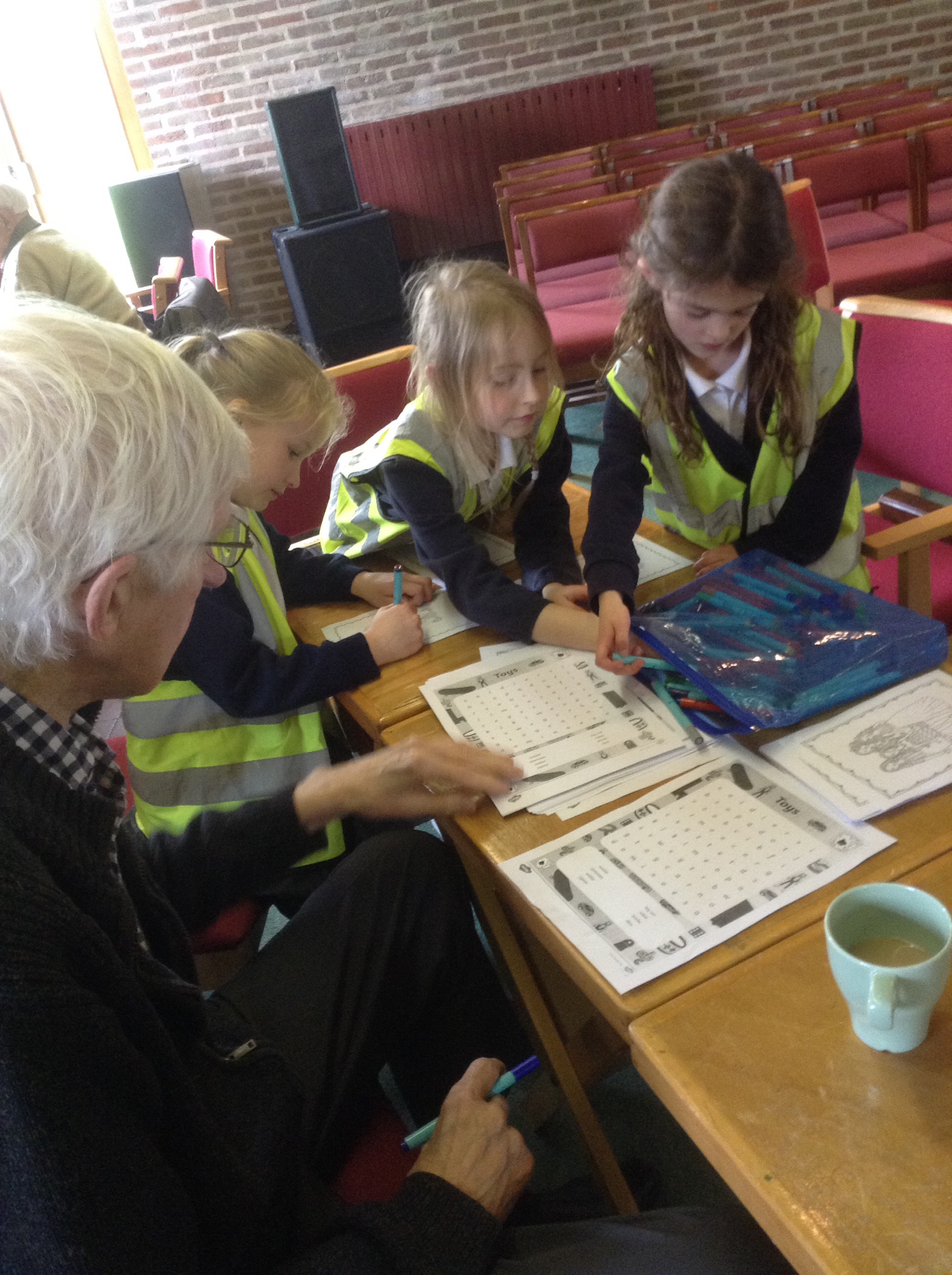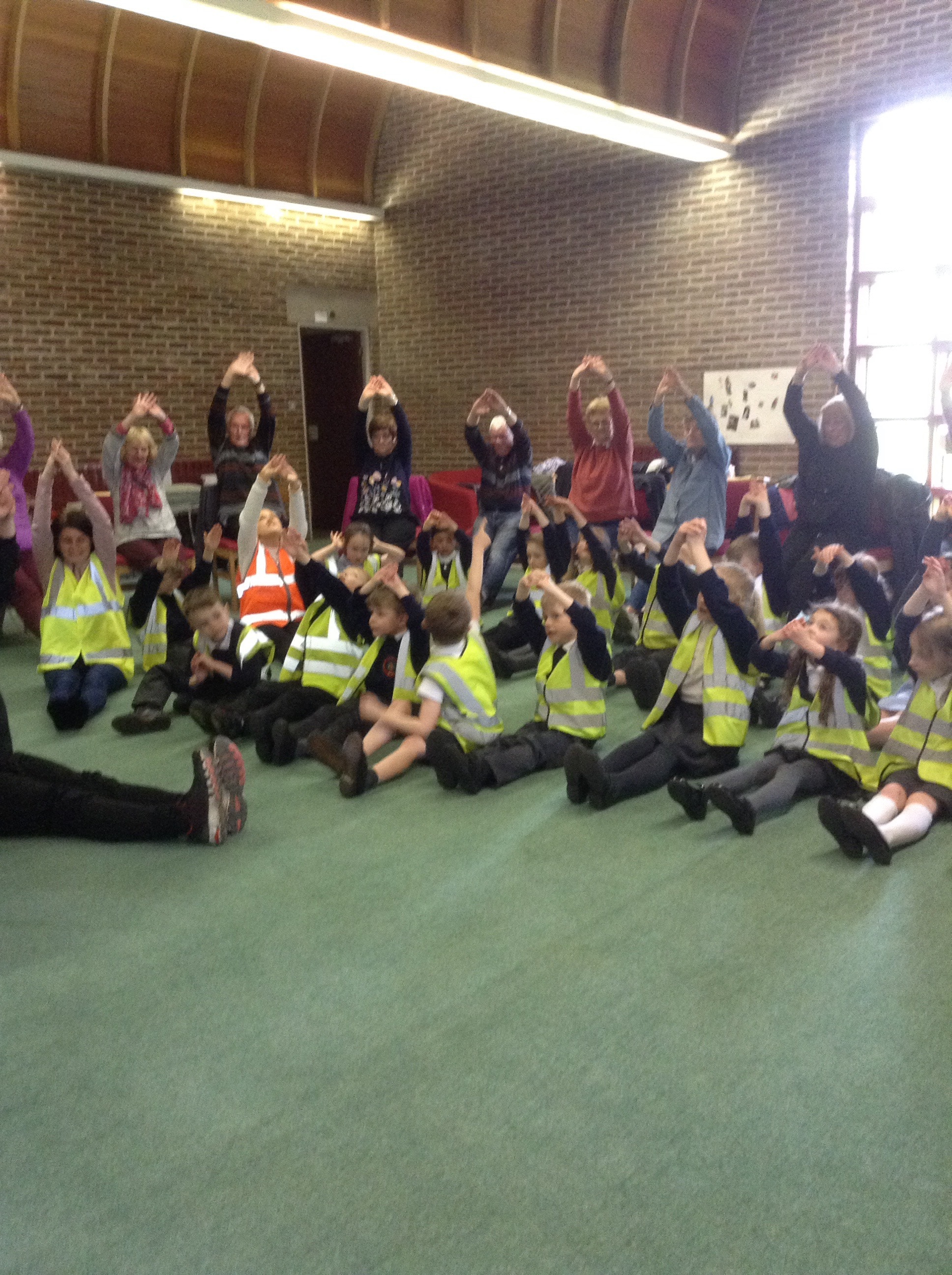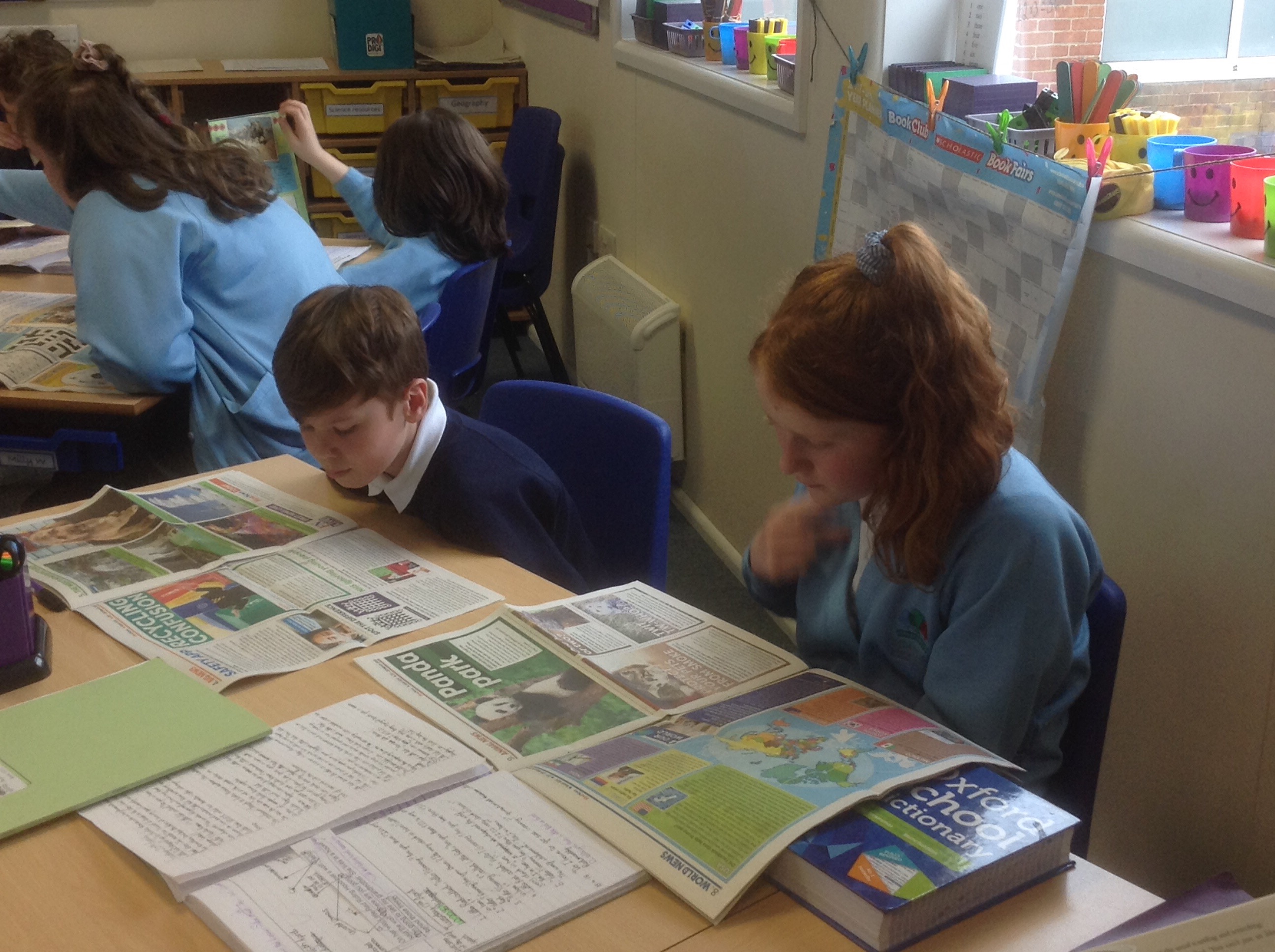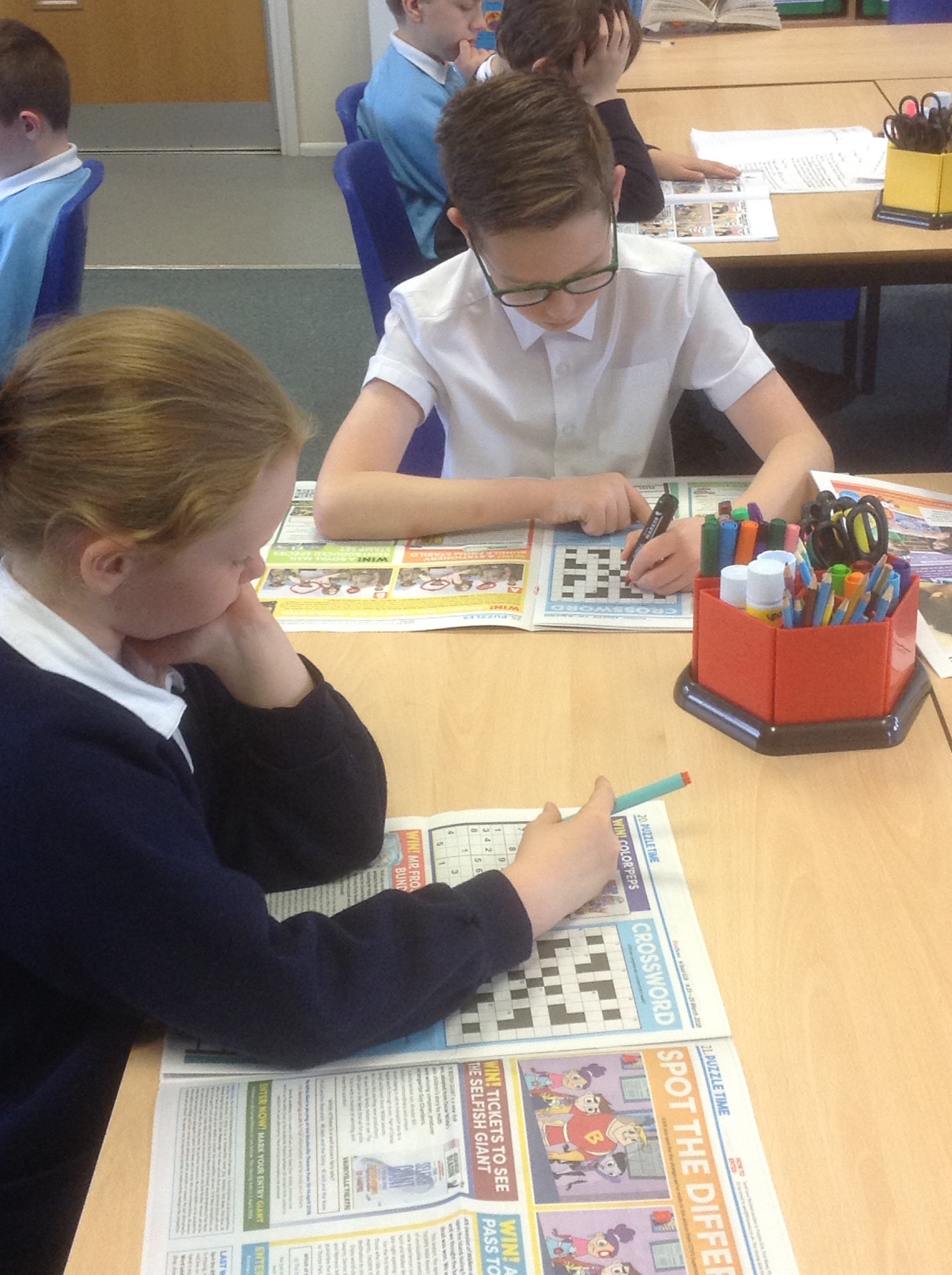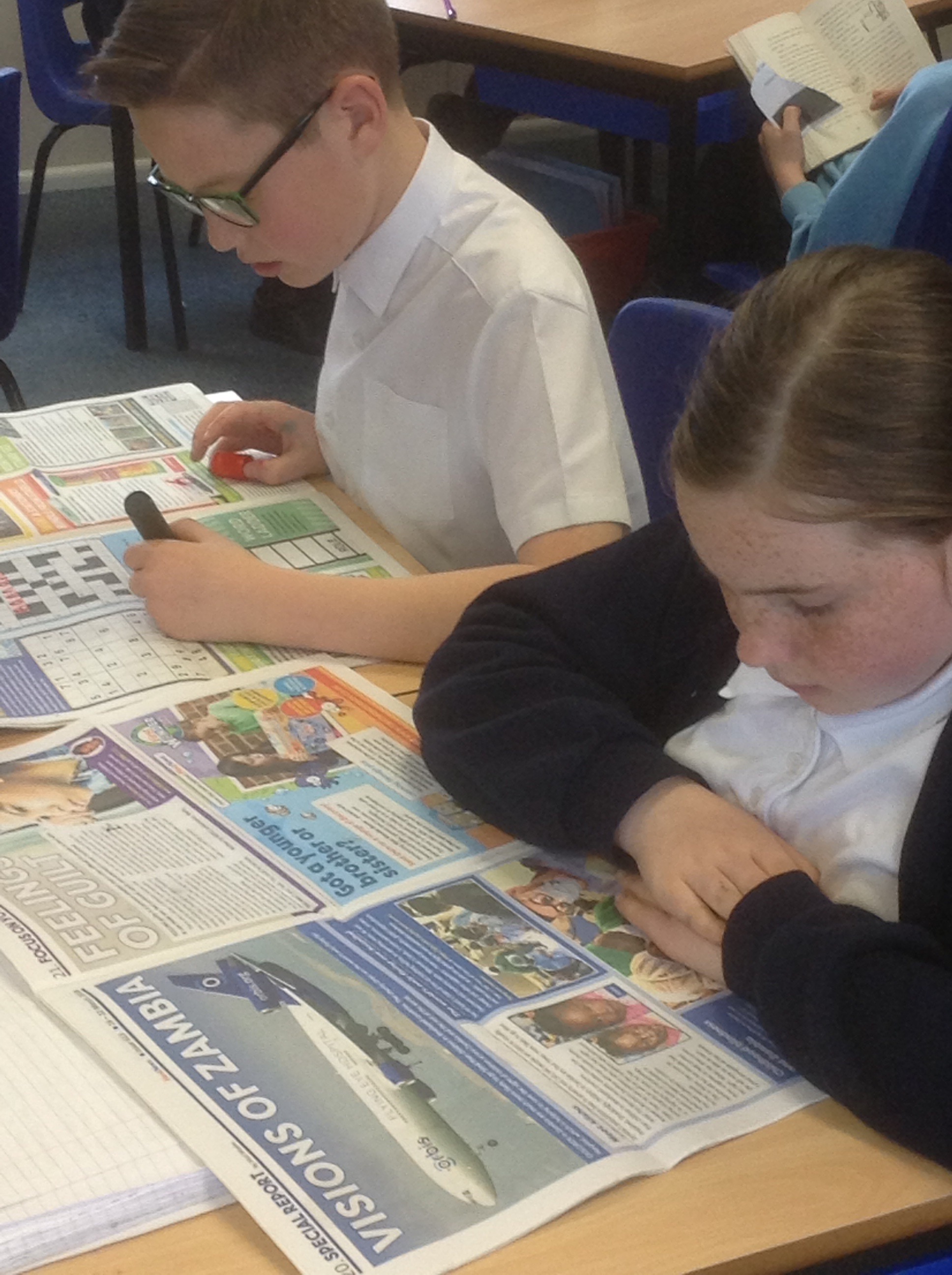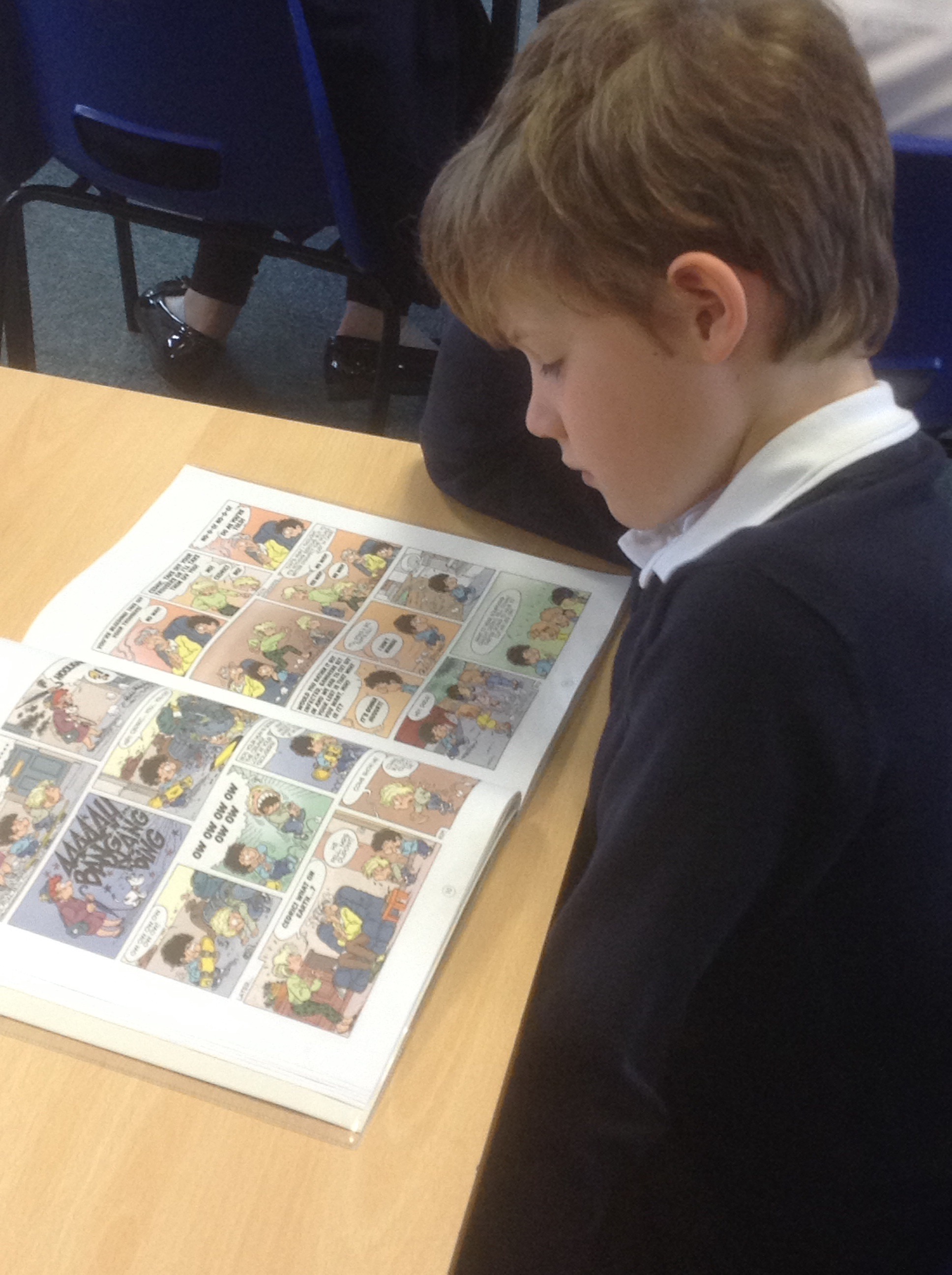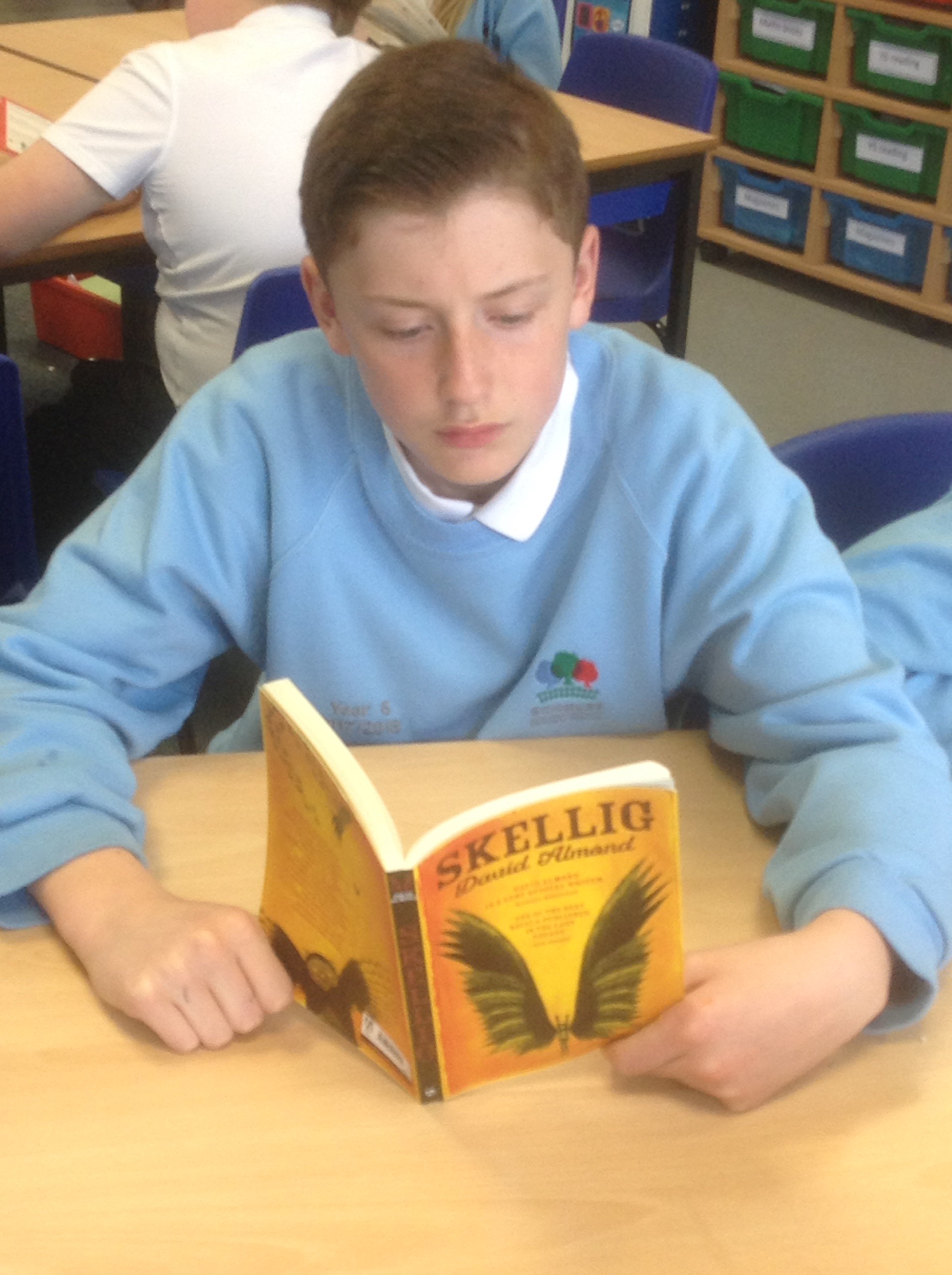Golden Stars
Well done to our two most recent Golden Stars. I think it’s safe to say there were pleased!
Community links – Elmete Elderberries
We visited the community group for older people, the Elmete Elderberries, at St Phillip’s Church for the second time today. The sit-down aerobics was a great work out, followed by some refreshments of course! We also enjoyed doing wordsearches, colouring and a live performance by the brass band. Our children behaved impeccably and were a credit to our community and the school. Thank you for having us, Elmete Elderberries.
Living and Learning – Recognising Emotions
This week, Year 3/4 have been recognising emotions in themselves and in others. The children watched a short video clip where they were asked to recognise a character’s feelings from his facial expression and body language. The children have also discussed how different situations can affect the way someone is feeling. Being aware of different emotions – both positive and negative – is an important basis for good mental health.
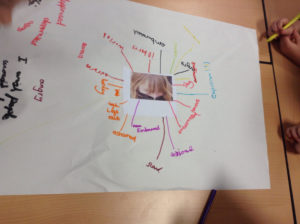


Shaggy Dog and the Terrible Itch!
1K really enjoyed retelling the story Shaggy Dog and the Terrible Itch. They created their own puppets and used them to act out the story.
Parent Consultations
We hope that you found our Parent Consultation meetings informative this week. It was good to see so many of you and to be able to talk about how much progress children have made so far this year. If you still haven’t had chance to speak to Mrs Long, please speak to staff to arrange an appointment.
Further to these discussions, here are some links that you may find useful regarding the Early Years curriculum.
- What to expect, When? This document provides an overview of the Early Years Foundation Stage and what type of things children are expected to be able to do at different stages throughout the year. The booklet has been written to help you as a parent know what to expect during these important years by focusing on the seven areas of learning and development which are covered in the EYFS.
- Jolly Phonics songs – We sing these songs in nursery and learn a new letter sound each week. Each song is accompanied by an action.
- Pure sounds – watch a video clip of our Foundation Two staff saying the pure sound with each Jolly Phonics action.
- Segmenting and blending – In nursery, we learn to segment and blend words orally. We teach children to break down (segment) a word into the sounds that they can hear such as ‘p-e-g’ or ‘c-u-p’ and then to stick/join (blend) these sounds together again to make a word. We do this practically in nursery, playing lots of games. It’s quite difficult to find video clips on line to demonstrate – this is an American version of an oral segmenting and blending game
Please speak to nursery staff if you have any questions.
Home Link – Plants and growth
We’ve been busy planting seeds in nursery and talking about what plants need to grow. Children have notcied some changes in our nursery garden; leaves are starting to grow on the trees and we’ve spotted bees visiting spring flowers.
This week, we’d like you to continue learning about plants and growth. You could…
- Go for a walk around a garden or park. What plants and flowers can you see growing? You could take photos or draw some pictures of things you see.
- We’re learning the ‘f’ sound this week for ‘frogs’ and ‘flowers’. What other words can you think of that begin with ‘f’?
- Does your child like gardening? Send us a photo and tell us what they’re growing at home.
- You could try planting some seeds yourselves. Cress seeds grow quickly!
- Make a model of a flower (Junk modelling, playdough or construction toys) How could you make the stem, the flower and the leaves?
- Paint a picture of some flowers. What colours do you need? What are the parts of a flower called?
Peter Rabbit and friends
Following on from children’s interest in the latest Peter Rabbit movie, we introduced some rabbit enhancements to nursery this week. We enjoyed listening to some of the original Peter Rabbit stories written by Beatrix Potter and in the art area, we created our own rabbit paintings. In maths, we counted out carrots for Peter and Benjamin Bunny. We focussed on language that we can use to compare groups of objects. Lots of children were confident at using more/ mostwhen comparing groups of objects, but many children found less/ least/ fewer trickier. Please help at home by using these words in everyday situations. Thank-you for sending in lots of ‘r’ objects for our sound shelf; we enjoyed playing “eye-spy something beginning with r,” in group times. Due to illness, we’ve had to postpone our visit from George the rabbit. We hope to find out the answers to our questions next week.
Week 3 – What are we learning this week?
We were really pleased to be able to get some frogspawn last week and as we hoped, children were really intrigued to find out about the ‘fish’ swimming in the tank.
This week we will learn:
- about the life cycle of a frog
- to make frogspawn prints using bubble wrap – investigating printing with different textures
- about the letter sound ‘f’ for frog. (Listen to the Jolly Phonics f song here)
- to count out a set number of tadpoles and remember to stop when we’ve reached that number. (Eg. Can you get 5 tadpoles from the pond? Remember to stop when you reach 5!)
- Sing ‘5 Little Speckled Frogs’ using the frogs in our water tray.
Living and learning: I can recognise emotions
Over the last two weeks, year 5/6 have been discussing our emotions. We have discussed our ‘gut’ reactions and how these can help us. We discussed situations in which we feel either comfortable or uncomfortable. Can you add to the list and talk about the benefits of being able to recognise emotions in others.
We love to read!
Did you know, that every week in Year 5/6, each class receives 3 copies of First News for the children to enjoy? The children can often be found enjoying the articles, sharing them with friends and having a go at the crosswords and word searches.
We love to read lots of other texts as well, including graphic novels, group reading books, fiction and non-fiction.
We just love to read!
Living and Learning – Identifying Emotions
Our Living and Learning sessions this week involved identifying different emotions through facial expressions and whole body movements, postures or poses. We also talked about how different situations make you feel. Music is a great way that you can help at home. Listen to a variety of classical music and talk about how it makes you feel.




